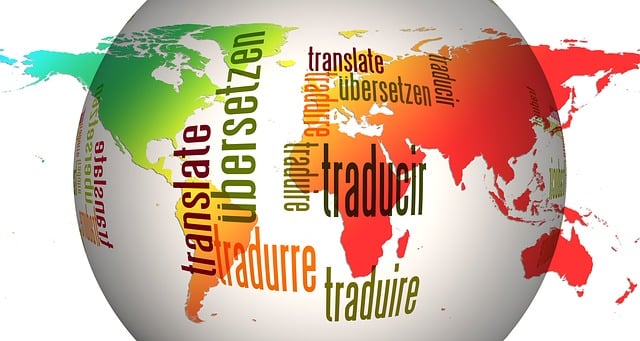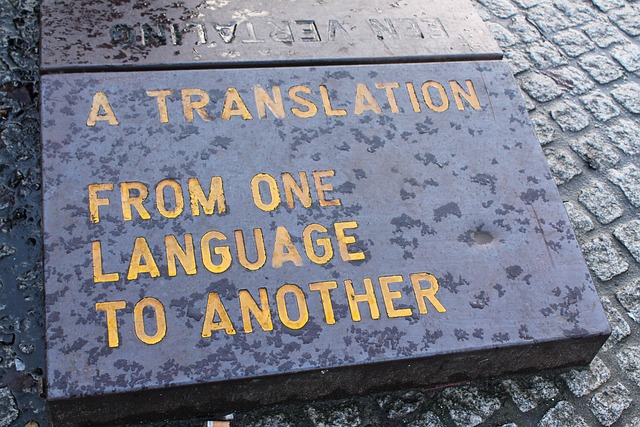Translation Memory (TM) is a tech-driven tool for consistent, efficient translation across languages and projects. Storing previous translations in a database, TMs automate suggestions, saving time. Effective TM management combines language expertise with organizational skills, ensuring cultural nuances and precision. Segmenting texts optimizes efficiency, enhances quality, and fosters global communication. AI improves TM capabilities, allowing translators to maintain brand voice and cultural relevance while saving time. Peer review and bilingualism enrich TM accuracy for diverse linguistic contexts.
“Unleash your potential as a translator with our comprehensive guide to mastering Translation Memory (TM). Discover the power of TM for consistent, efficient, and high-quality translations. This article delves into the fundamentals, offering insights on creating and maintaining effective TM, segmenting texts for optimal usage, and managing terms within translation memory systems. Learn advanced techniques to optimize your workflow, ensuring every project benefits from this revolutionary technology.”
- Understanding Translation Memory: Basics Explained
- Creating and Maintaining Effective TM
- Segmenting Texts for Optimal Memory Usage
- Term Management in Translation Memory Systems
- Leveraging TM for Consistency and Efficiency
- Advanced Techniques for TM Optimization
Understanding Translation Memory: Basics Explained

Translation Memory (TM) is a powerful tool used by professional translators to streamline their work and ensure consistent, high-quality translations. At its core, TM involves storing previously translated segments of text in a database for future use. This means that when a translator encounters a similar or identical segment again, the system automatically suggests an existing translation, saving time and effort. This process not only enhances efficiency but also promotes brand consistency across multiple projects and languages.
Beyond its technical aspects, TM is deeply intertwined with local customs knowledge and requires an understanding of the context in which the translation will be used. Accurate memory management involves maintaining a vast, well-organized database that captures both literal translations and cultural nuances. Additionally, oral interpretation skills can play a significant role in leveraging TM effectively, as they enable translators to communicate complex ideas precisely during discussions with clients or when navigating intricate terminology. Visit us at [brand] for comprehensive term base management solutions to elevate your translation marketing efforts.
Creating and Maintaining Effective TM

Creating and Maintaining Effective Translation Memory (TM) is an art that combines technology and linguistic expertise. At its core, TM acts as a robust database, storing previously translated segments of text to facilitate future projects. By leveraging existing translations, translators can significantly enhance productivity while maintaining consistency in tone and style across diverse pieces of content. This approach is particularly invaluable for extensive documentation, software localization, or film localization projects, where similar phrases and idiomatic expressions recur frequently.
Regular updates and meticulous management are key to keeping TMs effective. As new content is translated or existing materials undergo revisions, these changes should be integrated into the TM. This ensures that the memory stays current and relevant. Moreover, active management includes removing outdated entries and refining translations based on evolving language trends and industry standards. By visiting us at industry standards anytime, you can stay informed about best practices in localizing content, ensuring your TMs remain powerful tools for accurate and efficient translation.
Segmenting Texts for Optimal Memory Usage

Effective translation memory management begins with segmenting texts into manageable chunks. This strategy optimizes memory usage by breaking down complex projects into smaller, more digestible units. Each segment can be processed and stored individually, allowing translators to work efficiently while maintaining consistent terminology across global markets.
Segmentation also facilitates enhanced peer review and accuracy checks. Smaller segments enable team members to focus on specific portions of the text, identifying potential errors or inconsistencies more effectively. This meticulous approach ensures high-quality translations that reflect the nuances of the source content, ultimately elevating the final output and fostering trust among international audiences who rely on accurate communication. Find us at foreign language comprehension for expert guidance in navigating this process.
Term Management in Translation Memory Systems

Translation Memory (TM) systems are powerful tools for translators, offering efficient term management and consistency across projects. At their core, TM systems store previously translated segments, allowing users to retrieve and reuse terminology, saving time and ensuring accuracy. This process is particularly beneficial in the dynamic world of translation, where industry standards and technical translation dialect differences can vary significantly.
Effective term management within these systems involves creating a structured database that reflects current linguistic trends and cross-cultural communication norms. By adopting gender-neutral language, for instance, translators can contribute to inclusive content that resonates with diverse audiences. This strategic approach not only aligns with industry best practices but also enhances the overall quality of translations, ensuring they remain relevant and culturally sensitive.
Leveraging TM for Consistency and Efficiency

Leveraging TM for Consistency and Efficiency
In the world of translation, consistency is key to maintaining brand voice and ensuring accurate communication across various platforms. Translation memory (TM) plays a pivotal role in achieving both by storing previously translated segments. When you return to these segments, TM algorithms match them with new text, suggesting existing translations that can be reused or adapted—a process known as contextualization. This not only saves time but also guarantees consistency, especially when dealing with repetitive content.
AI-powered tools have further enhanced the capabilities of TM, introducing advanced features like artistic freedom subtitling, which allows for creative interpretation while preserving context. Unlike literal vs. free translation, where the latter prioritizes idiomatic expressions and cultural nuances, AI-driven systems strike a balance, enabling translators to maintain clarity and flow. By giving us a call at Idiomatic Expressions, you can harness these technologies to streamline your translation workflows and deliver content that resonates with global audiences.
Advanced Techniques for TM Optimization

In the pursuit of mastering Translation Memory (TM), advanced techniques play a pivotal role in optimizing your translation processes. One potent method is leveraging peer review, where multiple translators and experts scrutinize each other’s work. This collaborative approach not only enhances accuracy but also enriches the TM with diverse interpretations, fostering adaptability to various linguistic nuances and cultural contexts. By incorporating feedback from peers, you can ensure that your TMs become more robust and contextually relevant over time.
Additionally, managing language diversity within translation projects is a key aspect of TM optimization. Given the vast global language landscape, recognizing and catering to different linguistic requirements is essential. Bilingualism, as a skill set, becomes invaluable in this regard. Encourage translators with diverse linguistic backgrounds to contribute to your TM, ensuring that it reflects real-world language usage. For tailored advice and guidance, give us a call at Language – we’re here to help you navigate the intricacies of translation project management effectively.
Translation memory (TM) is a powerful tool that can greatly enhance translation efficiency and consistency. By understanding the basics, creating and maintaining effective TMs, segmenting texts optimally, managing terms efficiently, and leveraging TM for consistent output, translators can harness its full potential. Advanced techniques like intelligent segment grouping and leveraging machine learning further optimize the process. Mastering TM is not just a skill but a gateway to delivering high-quality, accurate translations promptly, ensuring superior results in today’s globalized world.
